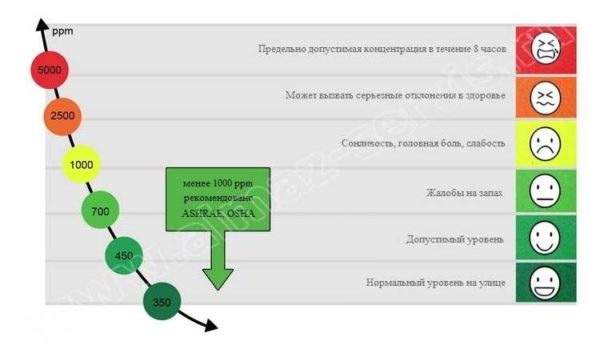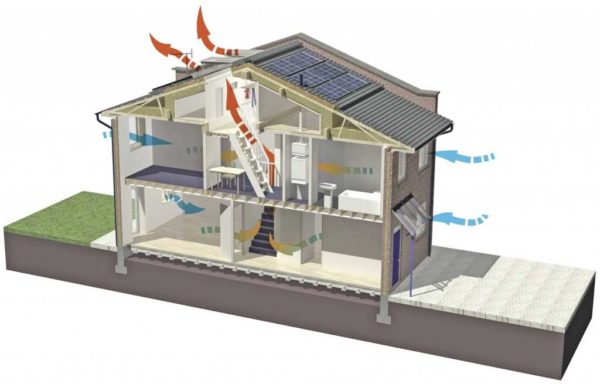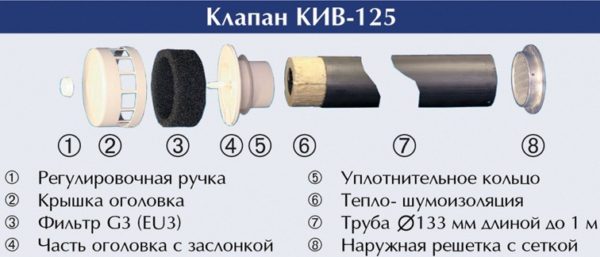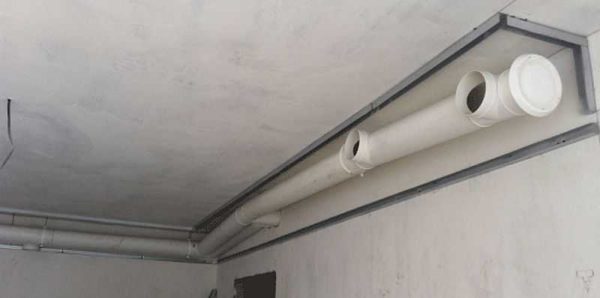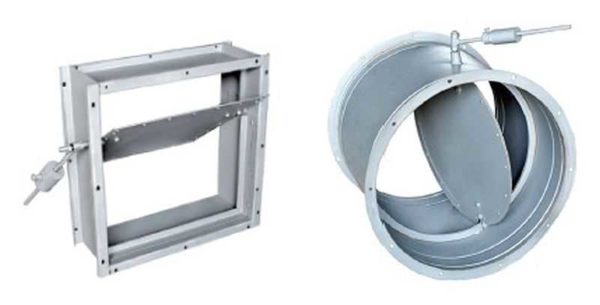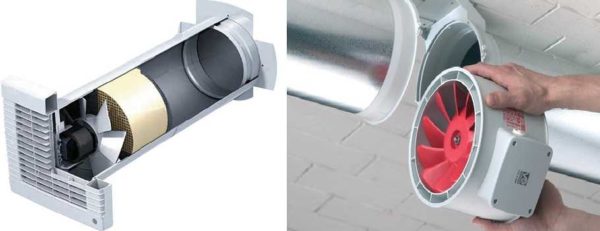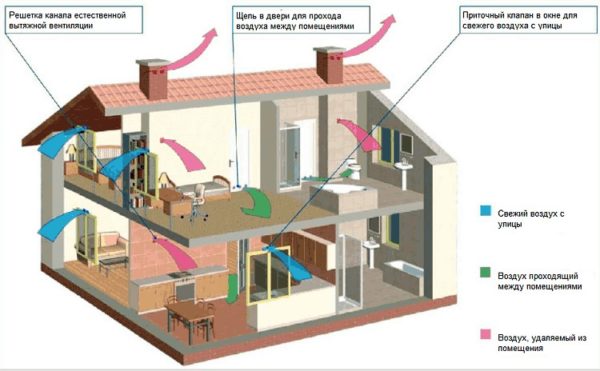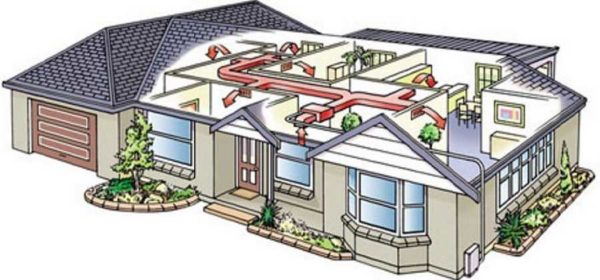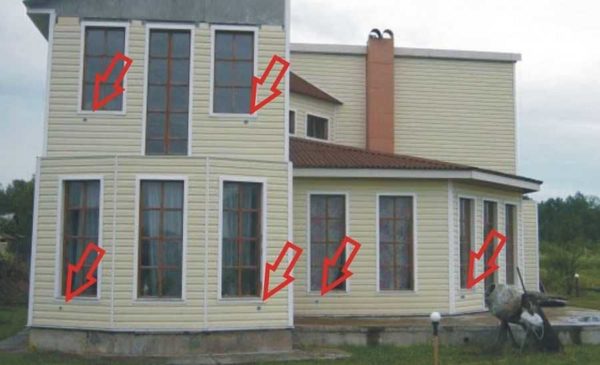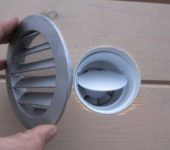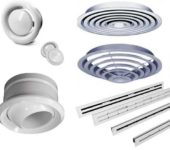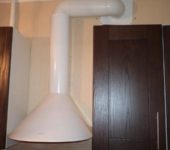How to make ventilation supply, exhaust
Even at the design stage of the house, you need to think about the fresh air in the premises. Moreover, it may be that self-designed ventilation will work no worse than professionally designed. Perhaps the solution will not be so elegant - the main thing is that it is workable.
The content of the article
Definition and severity of the problem
Ventilation is understood as a specially organized movement of air masses. It is necessary to create comfortable and healthy conditions for human life. In general, the system is very complex to calculate. There are simply no standard solutions that suit everyone or at least a certain group of users. Each project is individual. Even the location of one grill, the fan, plays a role. Much depends on the position of the house in relation to the wind rose and many more little things. In order for self-designed ventilation to work well, you need to seriously understand.
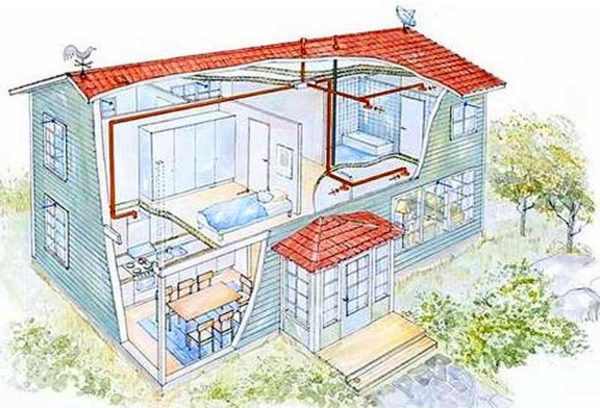
Ventilation is an organized exchange of air masses, during which the exhaust air is replaced with fresh air
To make you understand how serious this is
According to sanitary standards, one person, from a state of rest, processes about 30 cubic meters of air per hour. If the air is not renewed, oxygen becomes less and less, carbon dioxide and other waste products - more and more. As the amount of oxygen decreases, the state of health worsens. Long-term lack of oxygen provokes the development of diseases.
A few numbers, physiologists, showing the influence of the level of carbon dioxide CO2 on the human condition:
- High quality air - up to 800 ppm, cheerfulness, perfect well-being.
- Medium quality air - 800 - 1000 ppm. At the upper limit, half of the people feel drowsy, lethargic, decreased concentration, and deterioration in the quality and speed of information processing.
- Low quality air - 1000-1400 ppm. Lethargy, lethargy, problems with information processing, feeling of "stuffiness".
- Unsuitable for vital activity air - ppm above 1400. Inability to concentrate, severe drowsiness, fatigue, problems with sleep, dry mucous membranes.
Physiologists consider the content of carbon dioxide in the air at 1400 ppm - the lowest point for relatively normal human functioning. All indicators with a large amount of carbon dioxide are already beyond the bounds.
Illustrative example
To assess the severity of the situation without ventilation, here is a graph of the CO2 level. It was filmed as an experiment. To assess how necessary ventilation is in a modern house / apartment with plastic windows and the measures taken for thermal insulation.
Experimental conditions. Bedroom 13 squares (37 cubes), one person and one medium sized dog. The house has exhaust ventilation, a riser in the kitchen and in the boiler room. An exhaust fan is installed in the boiler room, which runs on a timer for half a night and half a day. There is no supply, fresh air is supplied through the windows, which have the function of ventilation and micro-ventilation.

Graph of the level of carbon dioxide concentration in a bedroom with a closed window and closed doors
Information to clarify the graph:
- Point 1. From 20 o'clock - work at the computer, the doors are ajar, the window is closed.
- Point 2.The window was opened, the doors were ajar, everyone left the room.
- Between 1-2 we returned to the room, closed the window, then opened it. All this can be tracked by fluctuating CO2 levels.
- Point 3. At 3-35 the doors and the window are closed, the man and the dog are sleeping.
- Point 4. 9-20 am, the person woke up. The CO2 level is 2600 ppm, which is well below the extreme norm. The window was opened, the carbon dioxide level returned to normal in less than an hour (Point 5).
As you can see from the graph, most of the night is spent with very high concentrations of carbon dioxide. This can be the cause of fatigue, poor health in the morning. In general, everything is clear. If you wish, you can conduct a similar experiment yourself. All you need is a weather station with the ability to measure carbon dioxide levels (with memory). Looking at the results of the experiment, it is difficult to overestimate the importance of the ventilation system. Let's figure out how it works.
The principle of ventilation at home and apartment
All ventilation systems are divided into two types - with natural air movement and forced.
Air always moves from a higher pressure zone to a lower pressure zone. This property is used in natural ventilation systems. The higher pressure zone is usually located in the apartment / house. If there are ventilation ducts / openings, the air from the premises tends to get into the street. But a new one must come to the place of the “gone”, otherwise the movement will stop. That is why for the normal operation of the ventilation system, both an outflow of exhaust air and an inflow of fresh air are required. And this is worth taking care of. Only then will ventilation - whether made / developed or not - work efficiently.
Keep in mind that "breathing" walls have nothing to do with air exchange. At best, they help regulate humidity. But only. Likewise, a conventional air conditioner does not add oxygen. It only maintains the given parameters of the air already available. It removes only excess moisture and has nothing to do with air exchange. Air supply must be ensured in the same way as outflow, using windows (not the most efficient way) or special devices.
Inflow problems
Here, it would seem, what is easier - make a hole in the wall - here is the flow of oxygen. Maybe somewhere this is so, but not in our climate, when most of the year outside the temperature is far from comfortable. What's wrong? A number of unpleasant moments:
- Even at not very low temperatures, unheated air causes acute discomfort. Therefore, heating elements are installed in the supply ducts or a recuperation system is used.
- Air carries dust and exhaust gases with it. Therefore, we need a cleaning system - filters.
- Just a hole in the wall is a source of extraneous noise. In cities, noise can interfere with life. Therefore, noise reduction is also necessary.
- The air conditions "overboard" are constantly changing, therefore humidity control is desirable - with dehumidification / humidification depending on the need. This point is not necessary, as you can make a separate system for maintaining the humidity level.
- When cold air enters, condensation forms on the walls of the supply duct. If not taken measures, it is absorbed into the walls, freezes / thaws - depending on the weather, thereby destroying these walls. Therefore, the supply devices are made thermally insulated.
As you can see, a “simple” hole in the wall becomes a very complicated device. And little of this list can be neglected. Existence will be too uncomfortable.
Exhaust ventilation
The exhaust ventilation in an apartment building is a large pipe that runs through all floors and out onto the roof. All apartments "in the riser" are connected to it.In the presence of normal conditions, due to the pressure difference in the apartment and on the roof, a "draft" is formed, which draws air out of the premises (it also works in the presence of an inflow).
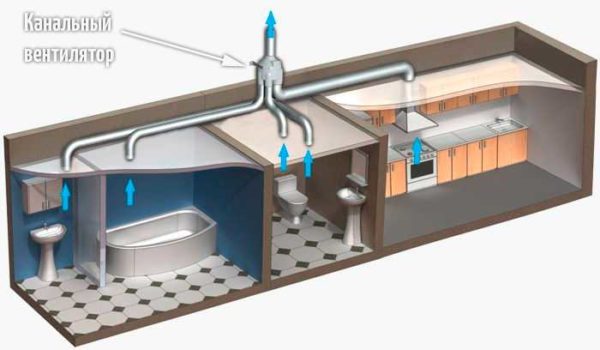
This is how you can organize exhaust ventilation in a house or apartment. It is only necessary to take into account that the entire required volume of air must be "pulled out" by the channel.
In apartment buildings, risers are usually found in the kitchen and / or bathroom. All other rooms are ventilated through these hoods. For normal air exchange in the bathroom door and in the kitchen, it is necessary to provide ventilation gaps (under the door or make overflow holes in the wall) or install grates.
In a private house, everything is organized in about the same way: in the kitchen or bathroom, a main ventilation duct is installed, which is led to the roof. You shouldn't finish it in the attic. Even if the attic is cold and ventilated. With temperature differences and high humidity of the exhaust air, a large amount of condensation forms. Even with good ventilation in the attic, it does not have time to evacuate, the ceiling "gets wet", the walls get wet. All in all, this is a bad idea.
Duct material
A few words about the material from which the exhaust ventilation duct is made in a private house. Most often, galvanized pipes are used, and - of a circular cross section. Their resistance to air flow is minimal. The second most popular are plastic air ducts... There are more problems with them - they accumulate static, which contributes to the accumulation of dust, are less resistant to fire. The advantages include a simpler installation, the presence of ready-made shaped elements, with which it is easy to create any system. In the case of these materials, the choice is yours - what you like best, use it.
What not to do is to expel the exhaust duct from the brick. Firstly, it is expensive (you also need a foundation for it), and secondly, it is the most problematic in operation, since it has uneven walls, which contributes to the accumulation of dust. Condensation accumulates in brick walls that are not covered with a metal sleeve, which causes the brick to quickly collapse. In general, brick exhaust ducts are from the last century.
Additional devices
What else may be needed in an exhaust system are check valves. They prevent air movement in the opposite direction, which occurs when the thrust is overturned. " When the pressure in the apartment / house is lower than outside. Also, check valves prevent the spread of odors from the kitchen / toilet to other rooms connected to the duct.
In general, the design of the exhaust system is simpler. But only under the condition of correct calculation of the ventilation duct cross-section, correctly drawn up route and competent installation.
Natural or forced
Ventilation is of two types - natural and forced. What's better? It's hard to say unequivocally. Everyone decides for himself, taking into account all the advantages and disadvantages of both types.
Natural ventilation in the house works due to the difference in pressure in the room and outside (due to the existence of the same "natural draft"). Its advantages are noiselessness, independence from electricity. Cons - low productivity due to which large cross-section pipes are needed, inability to control / regulate the intensity of work, dependence on the state of the external environment. In summer, natural ventilation often does not work, but sometimes it works in the opposite direction. This is when through the exhaust ventilation duct "pulls" hot air into the room.
In forced ventilation, air movement is provided by fans. It can be adjustable, it works in any weather, but only if there is electricity and efficient fans. And this is a minus.Even two. The first is volatility, the second is the noise that fans make during operation. Therefore, many people prefer to use plastic air ducts in forced ventilation systems. Precisely because they are "quiet".
Ventilation schemes for a private house and apartment
The simplest option is implemented in small houses and apartments. Air inlets are located in living rooms, hoods - in the kitchen and bathroom. The air entering the premises through the cracks under the doors enters the kitchen and bathroom, where it is discharged. This scheme works with an area of no more than 100 squares.
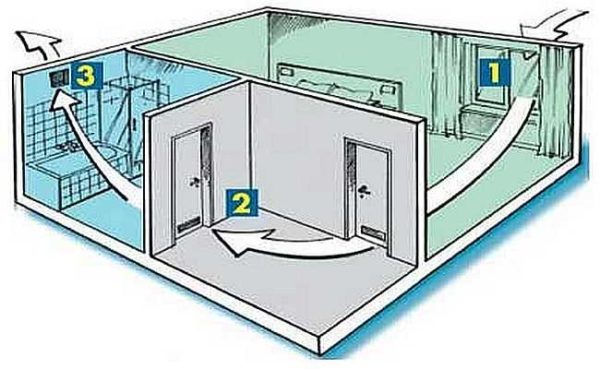
When the supply ventilation is separate devices in each room, the hood is through the kitchen or bath
In houses with a total area of more than one hundred and fifty squares, organizing two separate systems - supply and exhaust. Each of them has its own duct system. With such a device, each room has exhaust and supply openings in each of the rooms. In this case, adjustment of the intensity of the inflow and outflow of air is possible in each room - you can adjust the atmosphere to the requirements of its inhabitants.
With a centralized supply ventilation system, it is easier to prepare the air taken from the street - you can make a single cleaning and heating system. The prepared air can already be distributed around the premises. In this case, each room has two ventilation holes - one for supply and one for exhaust. They are located in opposite corners, covered with grilles or diffusers.
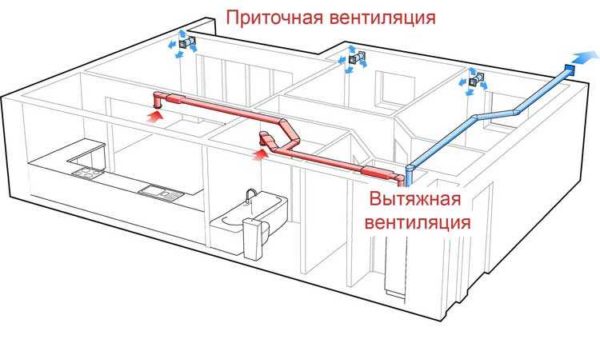
Supply and exhaust ventilation in a private house can be organized as follows: the supply is decentralized, the exhaust is centralized
Even with a large area of the house, the supply ventilation system can be made decentralized, as in the first scheme. With the right selection of equipment, it will work no less efficiently. The question is what will be more economically profitable, since the problem of air preparation for each supply channel will have to be solved. And the equipment is not cheap at all.
DIY ventilation: action plan
To independently design a ventilation system, you will have to perform a number of actions. Easier if the sequence is known.
Preparatory work
Gathering information and elementary calculations - this is where the independent creation of a ventilation project begins.
- Calculate the frequency of exchange in the whole house / apartment. It depends on the volume of the premises (you need calculate the volume of each room), their purpose, the number of residents. According to sanitary standards, the air in residential premises must be changed once an hour, in technical (kitchen / bathroom / toilet) - at least three times an hour. The norms for boiler rooms are their own and they must be taken into account (depending on the type of heating). Adding all the numbers, we get the required system performance, according to which the section of the exhaust duct is calculated, the performance of the ventilation equipment is selected.
- Draw a diagram of the movement of air flows. In this case, you immediately have to figure out the position of the supply and inlet ducts.
- Draw a diagram of the ducts. So far, no dimensions or detailing, just sticking to the rules and trying to fit in the system without over-complicating the design. Here everything is complicated, since the air ducts can only be hidden behind a suspended or stretch ceiling. Otherwise they will be open.
The preliminary data is ready. Think about where and what devices should be located for some time.
Parameter calculations and detailing
When all the questions on the scheme are resolved, it has taken its final form, we proceed to detailing. First, calculations are also made, then you have to look for the components of the system, decide which company to use the equipment and balance the budget.
- Calculate the cross-section of air ducts, based on the frequency of exchange, the volume of the room and the speed of "silent" air movement. Otherwise it will be impossible to live.
- Add dimensions to the diagram (can be redrawn).
- Carry out detailing. That is, make a list of the necessary elements of systems with an indication of the type and section.
- Calculate the resistance of each section of the system, select the fans (according to the operating point in the characteristic, taking into account the obtained resistance of the system). Take into account the noise level from the operation of the fan, take measures to reduce it (select a low-noise model).
- Calculate the cost of system components. Try to reduce "cash" with desires. Here you have to change the components several times, moving from what you want to what is real.
- We draw a final project with full detailing. We must also remember about the nodes of the passage of ventilation ducts through the walls / ceiling / roof, consumable and insulating materials, ventilation grilles and diffusers, fasteners and all other "little things" that translate into a decent amount.
Installation and setup
"It remains" to find, buy, mount. Little has been written, but it will take a lot of effort, time, nerves to implement this item. Only then can we say that DIY ventilation is completely ready.
But that's not all. Self-made ventilation must be started, adjusted. This is also not the easiest process - to achieve a consistent operation of the system as a whole. Then, during operation, the readjustment has to be done often. When the season changes, the number of residents changes, the weather conditions change. In general, adjusting the ventilation system is another responsibility of the home owner.
By the way, we advise you to think. Do-it-yourself ventilation (meaning installation) will cost less, but it takes more knowledge and time. Knowledge can be gleaned, and if there is a lack of time, you will have to look for and hire performers, then accept their work.
Other solutions
The market does not stand still, and today new solutions are proposed. For example, there are recuperator systems that immediately, through one hole in the wall, remove exhaust air and supply fresh air. This is an ideal solution if ventilation was taken care of after renovation or if it is necessary to solve the problem only in some rooms. The main thing is that these premises have at least one wall facing the street.
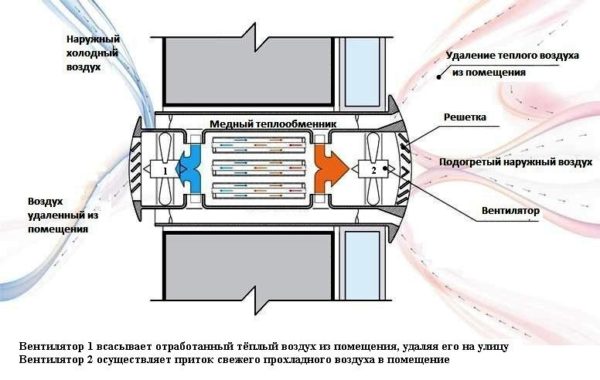
There is a device that removes exhaust air through one hole, takes in fresh air. At the same time, it also heats / cools it
There is only one drawback of this method of organizing ventilation in a house or apartment - the price of such equipment. The cost of one such device is more than $ 400.

